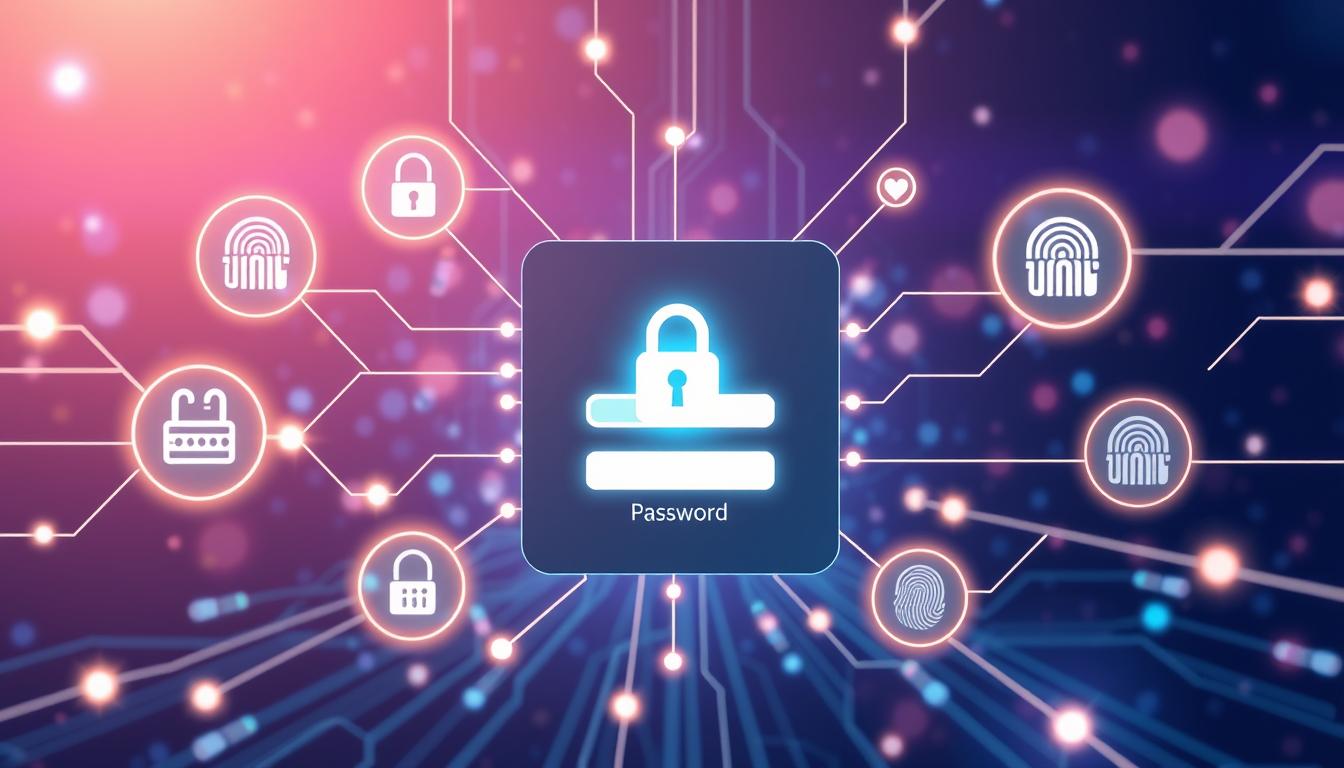
Multi-factor authentication is a key part of keeping digital identities safe. It uses advanced ways to check who you are. This is important because online threats are getting worse.
With MFA, you need to show more than just a password to get into secure areas online. This makes it harder for hackers to get in. It’s a big help for keeping your digital world safe.
MFA works by mixing different ways to prove you’re who you say you are. This makes it very hard for hackers to get past. Now, over 90% of online services use MFA to protect their users.
Key Takeaways
- MFA provides robust protection against unauthorized digital access
- Multiple verification methods reduce security vulnerability
- 90% of online services now support this advanced security method
- Authentication methods continue to evolve with technological advancements
- Implementing MFA significantly reduces cybersecurity risks
Understanding Multi-Factor Authentication Basics
Multi-factor authentication (MFA) is a big step up in digital security. It changes how we protect important information. Old ways of using passwords just aren’t enough anymore.
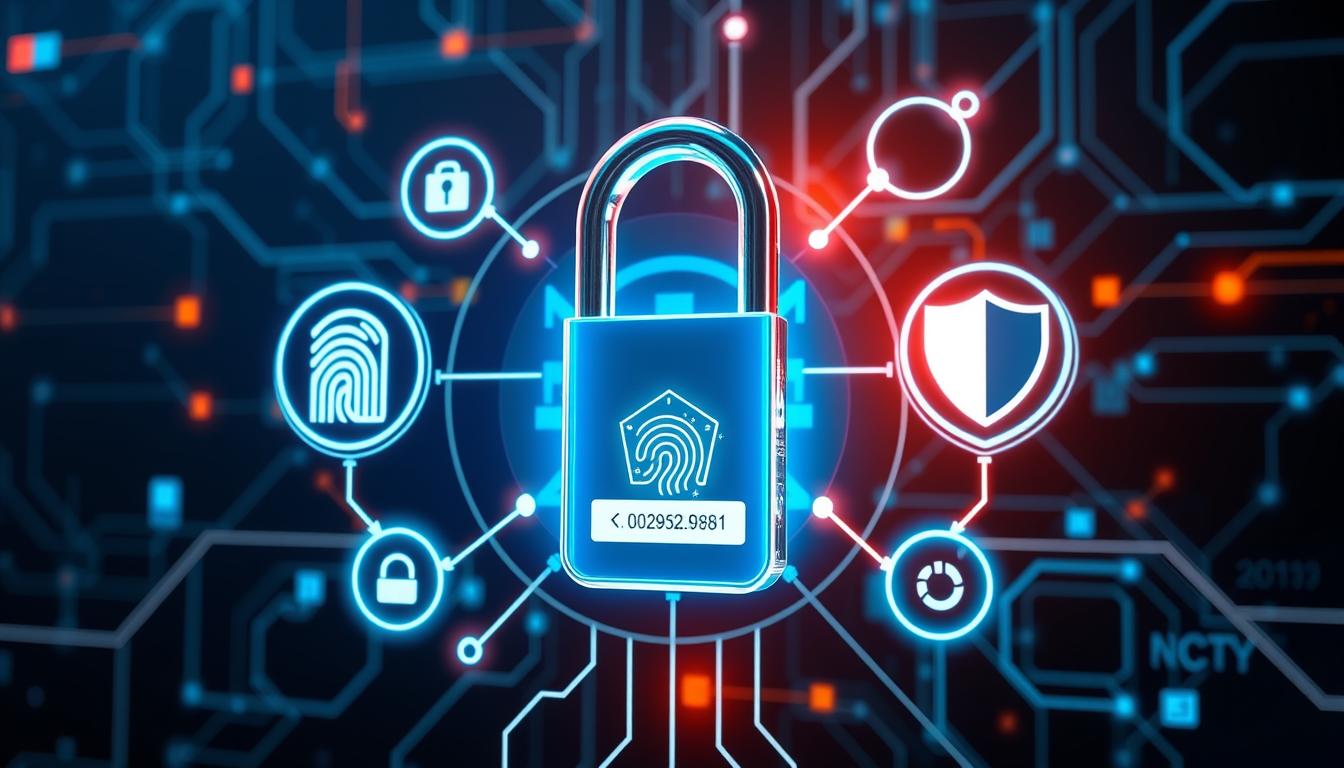
Now, we need stronger security. Microsoft says 99.9% of hacking can be stopped with good MFA.
Evolution of Authentication Methods
How we check who’s who has changed a lot. We used to just use passwords. Now, we have more secure ways.
- Single-factor authentication using passwords
- Two-factor authentication integrating additional verification
- Advanced multi-factor authentication with multiple security layers
Core Principles of MFA Security
Two-factor authentication works by using more than one way to check who you are. This includes:
- Something you know: Passwords or security questions
- Something you have: Mobile devices or hardware tokens
- Something you are: Biometric data like fingerprints
Key Benefits of MFA Implementation
Using MFA makes security much better. Studies show it makes phishing attacks 70% less likely. It’s a key part of keeping our digital world safe.
“MFA increases account security by 99% when implemented systematically” – Cybersecurity and Infrastructure Agency (CISA)
| MFA Adoption Metric | Percentage |
| Enterprise MFA Adoption | 60% |
| Reduction in Unauthorized Access | 85% |
| Organizations Planning MFA Investment | 75% |
These numbers show how important MFA is. It helps keep our digital world safe from new threats.
The Three Primary Authentication Factors
Multi-factor authentication (MFA) is a strong way to protect digital security. It uses many verification methods. This makes it hard for unauthorized access to happen.
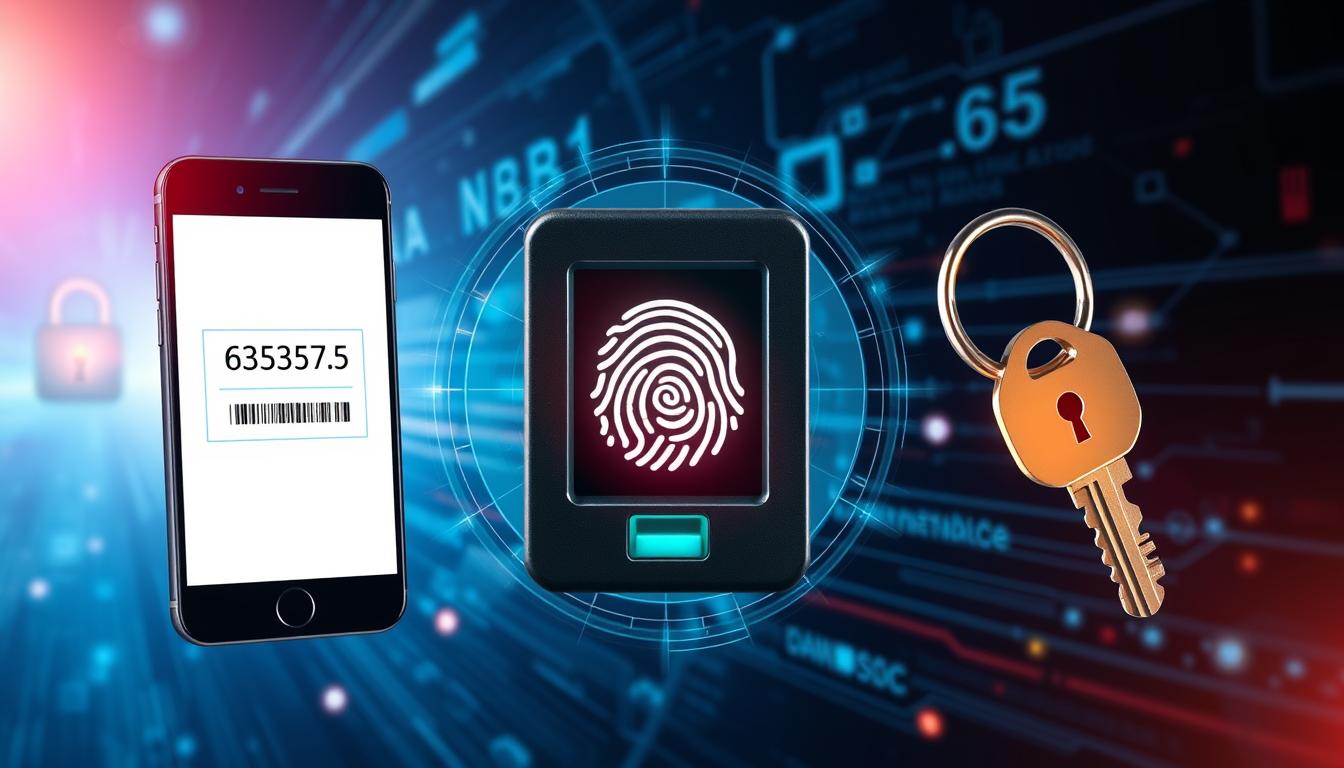
There are three main factors in authentication systems. They make a strong security framework:
- Something You Know (Knowledge Factor)
- Something You Have (Possession Factor)
- Something You Are (Inherence Factor)
Something You Know (Knowledge Factor)
The knowledge factor is about things only you should know. This includes:
- Passwords
- Personal identification numbers (PINs)
- Security questions
Weak or stolen passwords cause 81% of data breaches. This shows how important it is to use strong passwords.
Something You Have (Possession Factor)
Possession factors need physical devices for authentication. Examples are:
- Mobile phones
- Security tokens
- Smart cards
- Hardware authentication keys
Mobile push authentication is very good at fighting off attacks.
Something You Are (Inherence Factor)
Biometric authentication is the most advanced security layer. It uses unique physical traits like:
- Fingerprint recognition
- Facial recognition
- Voice authentication
- Retina scans
Modern biometric systems can spot fake attempts. This makes biometric authentication very secure.
Multi-factor authentication transforms digital security by creating an intricately layered defense mechanism. Companies using MFA see a 70% drop in security breaches. This shows how vital it is to use all these factors together.
How MFA Works in Practice
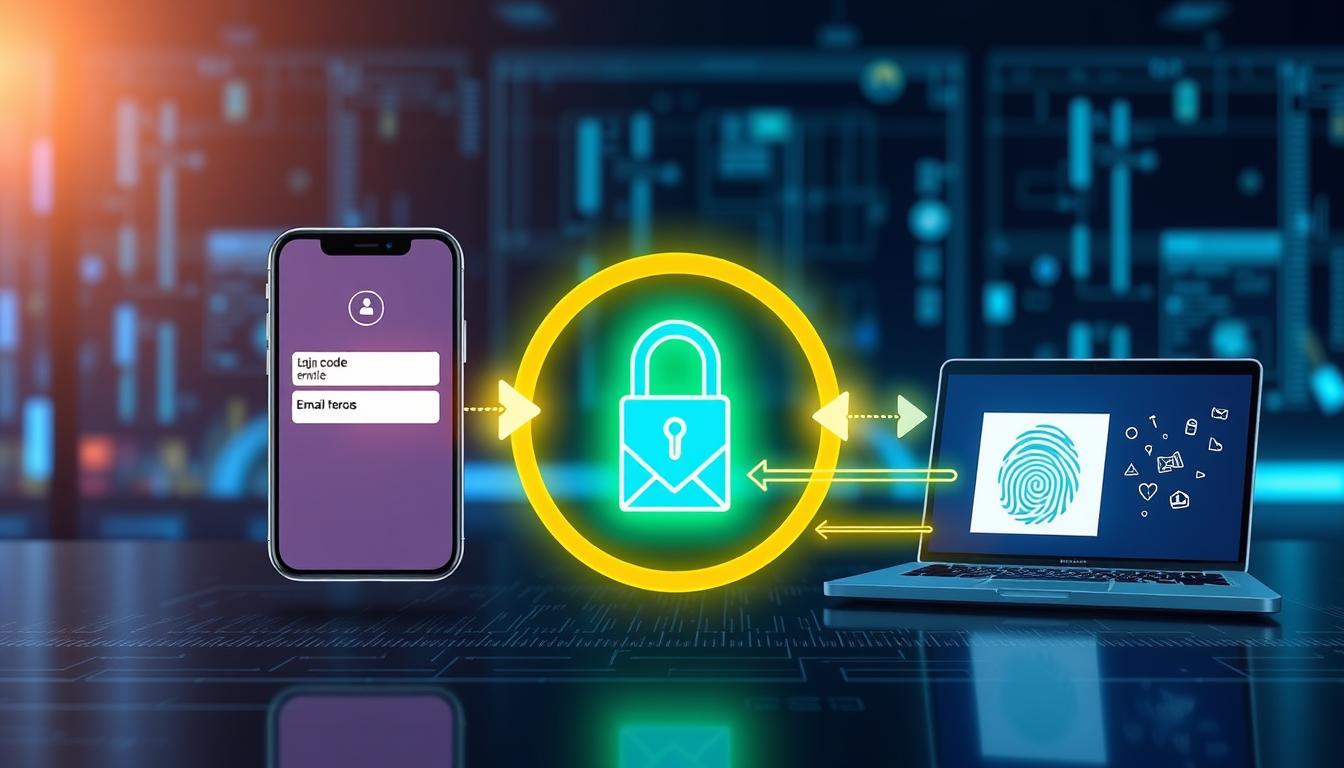
Multi-factor authentication (MFA) is key to keeping systems safe. It uses many layers of security to stop unauthorized access. This makes it much harder for hackers to get in.
The MFA process has a few main steps:
- First, you log in with your usual username and password.
- Then, you get a signal to do more to prove who you are.
- Next, you use a second way to show you’re you, like a code sent to your phone.
- After that, you’re checked again and then you get in.
MFA can block up to 99.9% of hacking attempts. Companies that use MFA see a big drop in security threats. They report a 70% cut in phishing attacks. Multi-factor authentication transforms digital security by creating multiple barriers against unauthorized access.
There are many ways to use MFA, each with its own level of security. Some common methods include:
- SMS codes sent to your phone
- Notifications from an authenticator app
- Biometric scans like face or fingerprint recognition
- Hardware tokens that you plug into your computer
Adaptive MFA goes even further by looking at things like where you’re logging in from and what device you’re using. It also checks how you act online. This smart method makes identity checks more flexible and effective.
By asking for more than one way to prove who you are, MFA makes it much harder for hackers. This makes systems much more secure.
Differences Between 2FA and MFA Systems
It’s important to know the differences in how we protect our digital world. Two-factor authentication (2FA) and multi-factor authentication (MFA) are two different ways to keep our data safe.
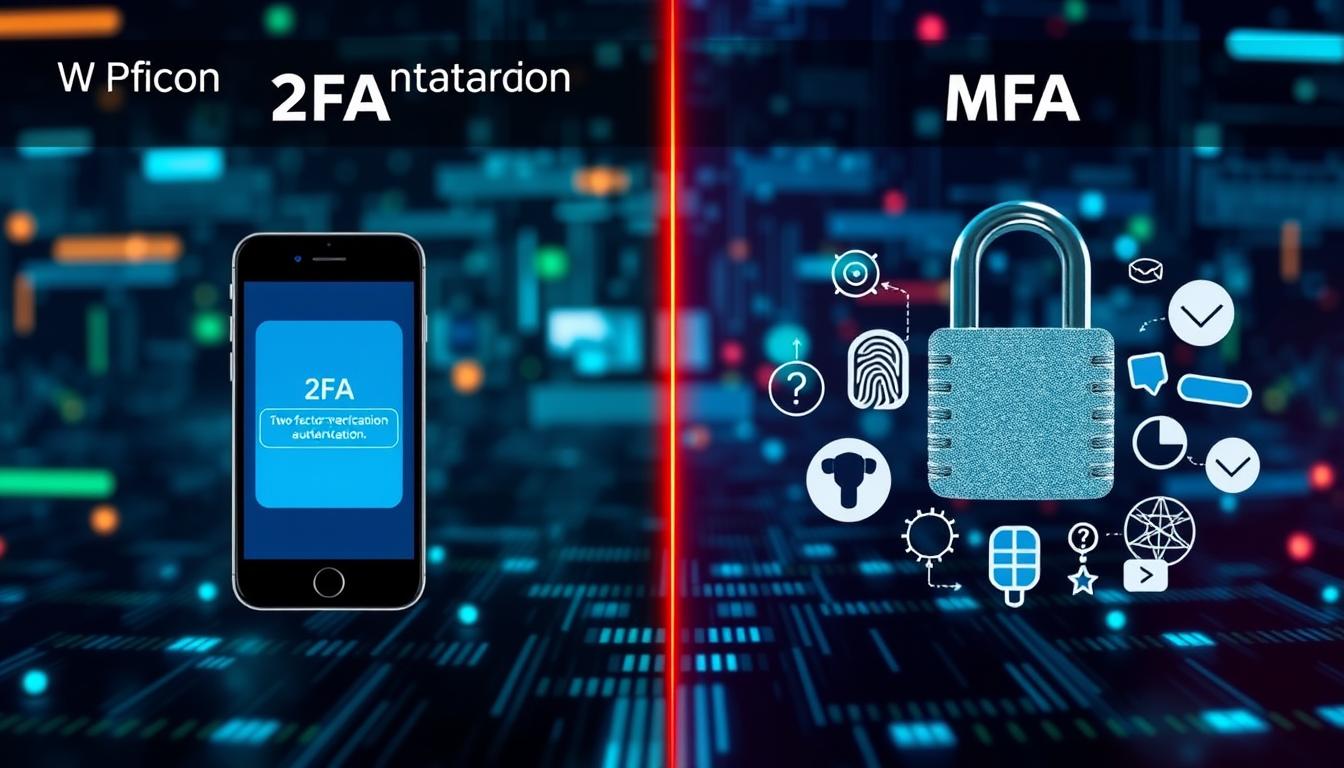
- 2FA needs exactly two ways to prove who you are
- MFA lets you use two or more ways
- 2FA uses the same type of proof twice
- MFA uses different types of proof
Two-Factor Authentication Fundamentals
Two-factor authentication adds an extra layer of security. It asks for two different ways to prove your identity. This can be a password and a code sent to your phone.
2FA adds an essential layer of protection beyond traditional password-based systems.
Multi-Factor Authentication Components
MFA makes security even stronger by using more than one way to prove who you are. These ways include:
- Something you know (like a password)
- Something you have (like a token)
- Something you are (like your face)
Using these methods can really help keep data safe. About 93% of data breaches could be stopped with MFA. Companies see a big drop in security risks, up to 99.9% less. While 2FA is better than just one factor, MFA is the strongest. Most IT experts think MFA makes their security much better. About 90% of them believe it’s a game-changer.
Common MFA Authentication Methods
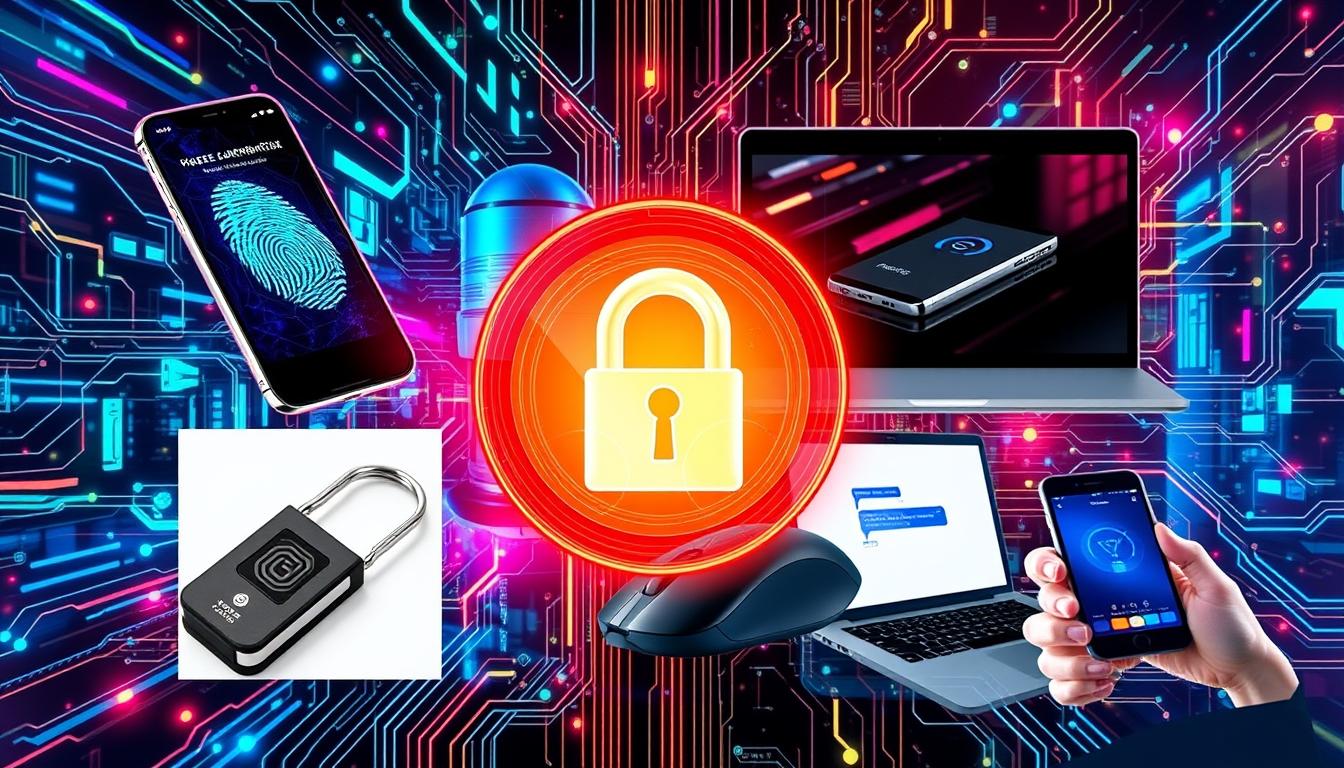
Multi-factor authentication (MFA) is key in fighting off cyber threats. In 2022, over 1,800 data breaches exposed more than 422 million people. This shows how vital strong authentication strategies are.
Companies use many ways to keep data safe. One-time passwords (OTPs) are a strong tool. Time-Based One-Time Passwords (TOTP) are good for 30 to 60 seconds, making them hard to intercept.
- Hardware security tokens provide high-level protection
- Biometric authentication offers advanced identity verification
- Mobile authenticator apps generate dynamic security codes
Security tokens are also important. They are physical or digital and give unique codes. Different types of security tokens include:
- USB-based security keys
- Smart card authentication
- Mobile device-generated tokens
Multi-factor authentication transforms digital security by requiring multiple proof factors for account access.
Today, security methods are getting smarter. They use risk-based techniques that adjust security needs based on the situation. Microsoft suggests using passwordless methods like Windows Hello and Passkeys. These offer advanced security that’s easy for users.
Biometric Authentication in MFA
Biometric authentication is a game-changer in multi-factor authentication (MFA) systems. It uses unique physical and behavioral traits for security and ease of use.
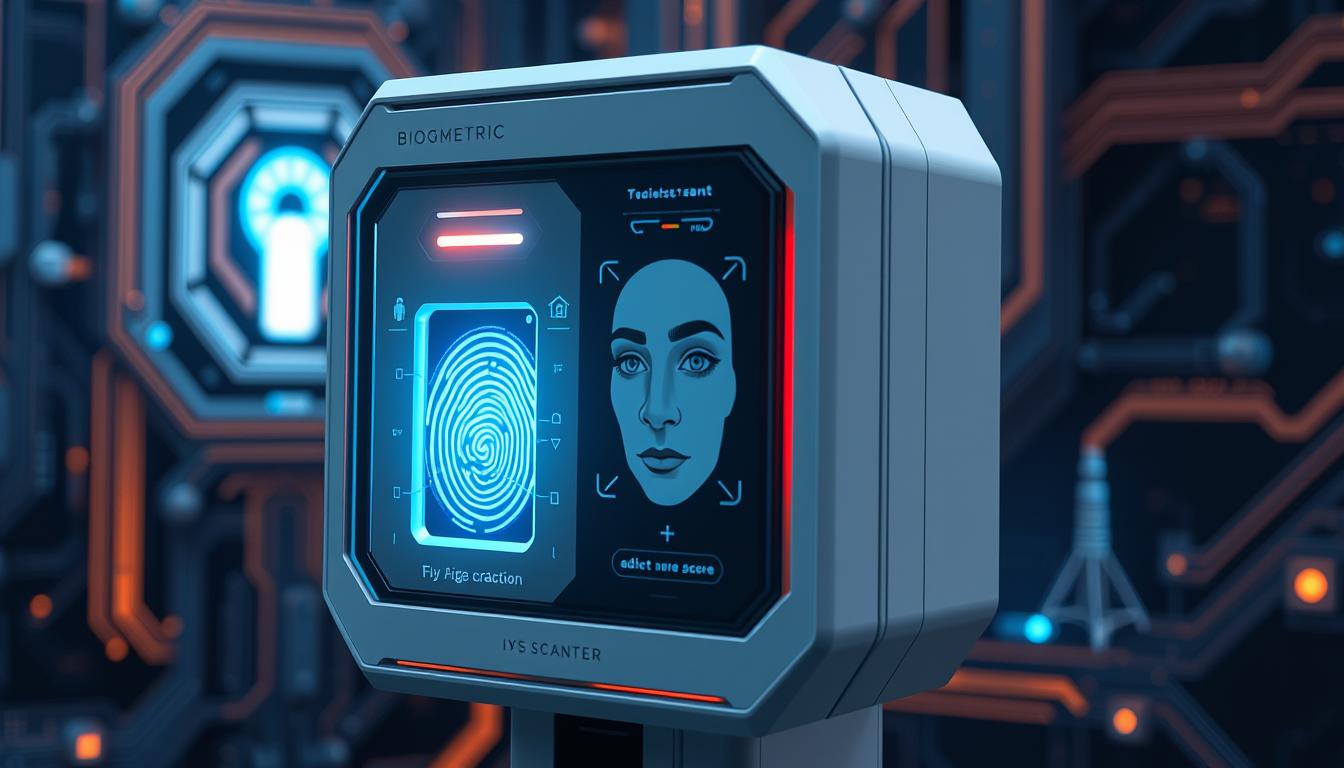
Today, biometric tech has changed security for the better. About 85% of smartphones now have biometric features. This shows how reliable and common it is for verifying identities.
Fingerprint Recognition
Fingerprint recognition is a top choice for biometric security. Each fingerprint is unique, making it hard to copy. Its benefits include:
- High accuracy in identity checks
- Fast and easy to use
- Hard to fake or steal
Facial Recognition Systems
Facial recognition uses facial features to confirm who you are. Yet, it faces accuracy issues, with some systems biased against diverse groups.
| Biometric Method | Accuracy Rate | Implementation Challenges |
| Fingerprint Recognition | 99.5% | Sensor quality limitations |
| Facial Recognition | 95% | Potential algorithmic bias |
| Voice Authentication | 92% | Background noise interference |
Voice Authentication
Voice authentication checks your voice to confirm your identity. It looks at speech patterns, tone, and how you pronounce words.
Biometric authentication boosts user verification certainty when paired with traditional methods.
The global biometrics market is set to explode, hitting over $67 billion by 2027. As tech gets better, biometric authentication is key to strong MFA strategies.
One-Time Passwords (OTP) and Their Role
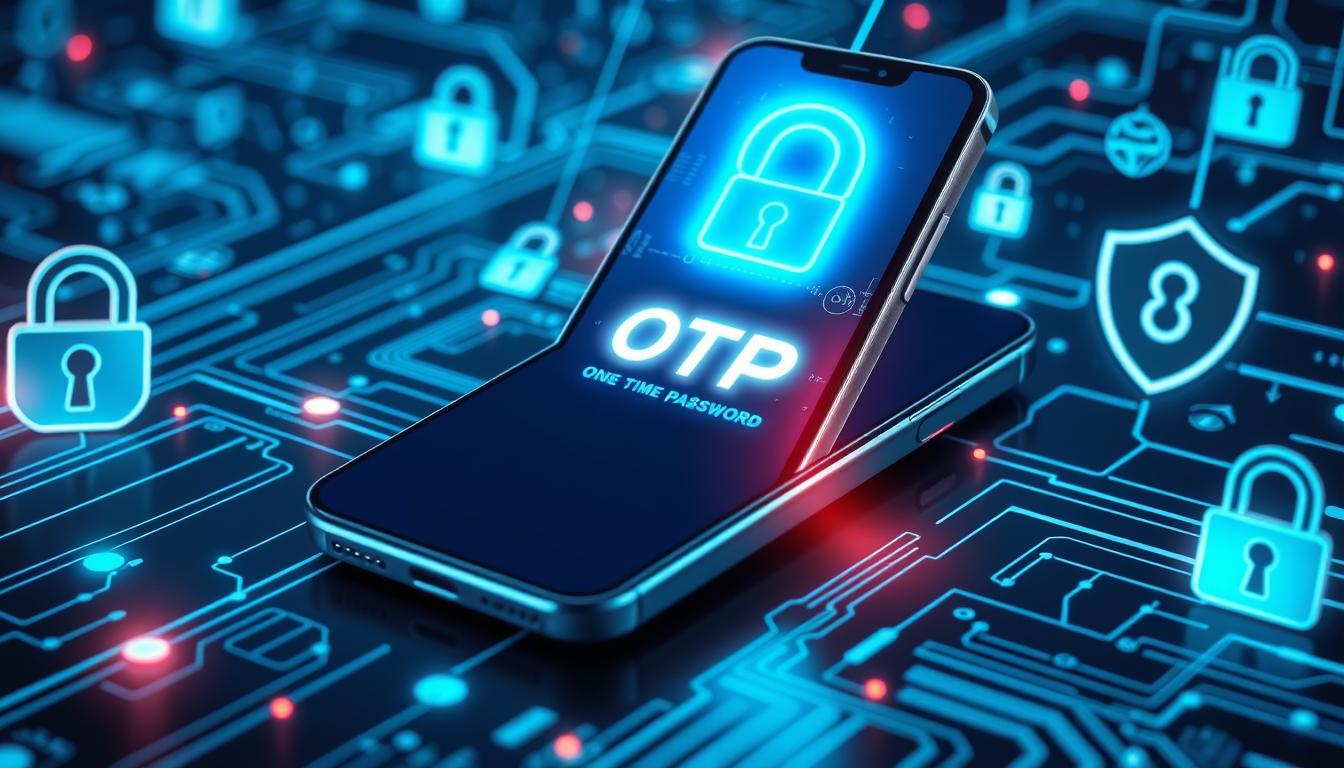
One-time passwords are key in today’s multi-factor authentication. They are unique codes for each login, making it hard for hackers to get in. This ensures your online identity is safe.
OTPs have changed how we protect our digital lives. They make it hard for hackers to guess your login by changing it every time. This is much better than old static passwords.
- OTPs can be sent in many ways: Authenticator apps SMS messages Email Physical tokens
- The good things about OTPs: They make it easier to keep your login info safe They lower the risk of sharing passwords They make logging in more secure
One-time passwords represent the frontline defense in protecting digital identities against sophisticated cyber threats.
There are two main ways to get OTPs: Time-Based One-Time Passwords (TOTP) and Hash-Based One-Time Passwords (HOTP). TOTP codes are good for 30-60 seconds. HOTP codes stay valid until you ask for a new one.
But, OTPs have their own problems. Some people find them hard to use. Companies need to make sure they are easy to use while keeping things secure.
Hardware Security Keys and Tokens
Security tokens are key to keeping our digital world safe. They add an extra layer of security beyond just passwords. This makes our digital lives much safer for both businesses and individuals.
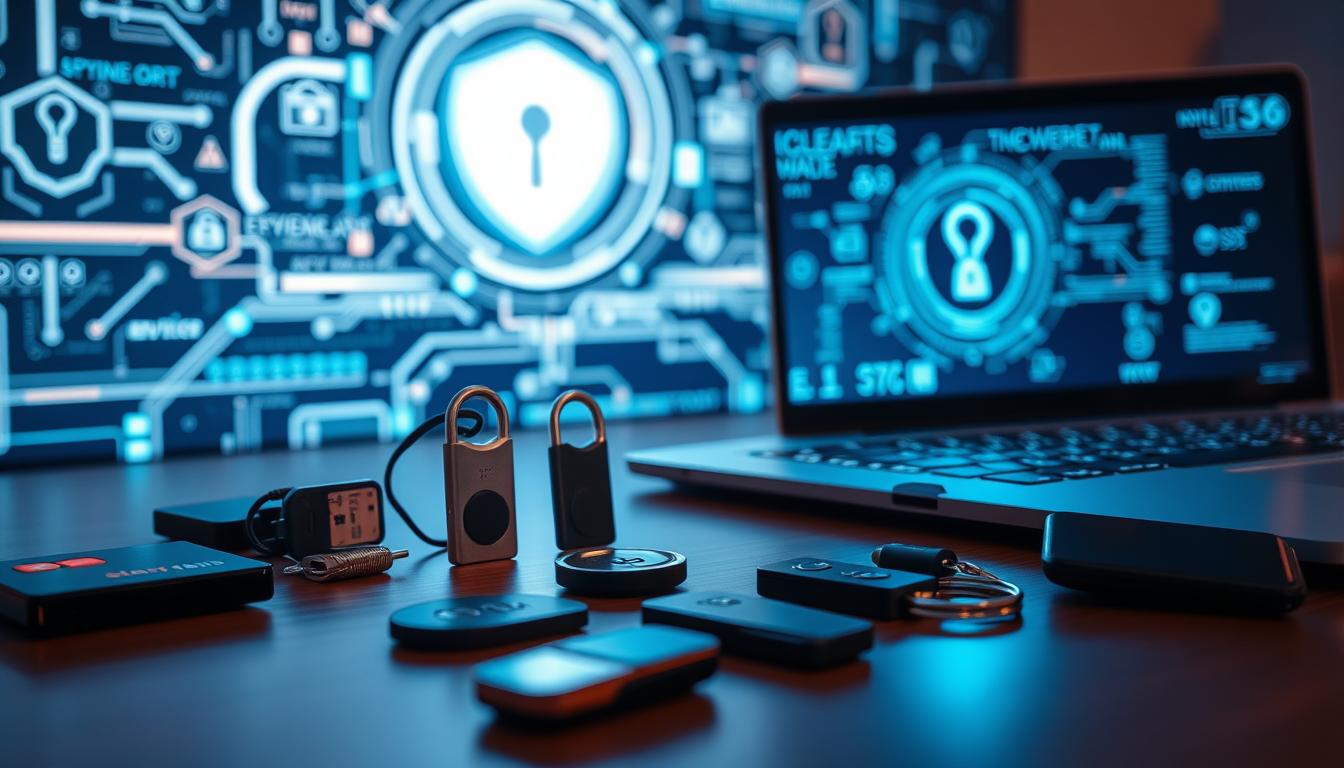
Hardware security keys have changed the game in multi-factor authentication. They are small but pack a big punch against hackers. These devices create unique codes that are hard to crack.
USB Security Keys: Advanced Authentication Solutions
USB security keys offer top-notch protection with advanced tech. They have cool features like:
- Support for FIDO2 and WebAuthn standards
- Resistance to phishing and remote attacks
- Portable and easy-to-use design
Smart Card Technologies in Enterprise Security
Smart cards are a big deal in business security. They mix physical and digital security in one neat package.
| Security Key | Price | Performance Rating | Passkey Storage |
| Yubico Security Key C NFC | $29.00 | 5.0/5.0 | 100 passkeys |
| Yubico YubiKey C Bio | $85.00 | 4.5/5.0 | 250 passkeys |
| Google Titan Security Key | $30.00 | 3.5/5.0 | 250 passkeys |
Hardware tokens transform authentication from vulnerable password systems to robust, cryptographically secure interactions.
Using security tokens can make a big difference in security. Studies show that using these tokens can cut down on hacking attempts by 99.9%. The market for these tokens is expected to hit USD 1.57 billion by 2026. This shows how important they are for keeping our digital world safe.
Mobile Authentication Methods
Mobile authentication has changed the game for two-factor authentication. It offers users flexible and secure ways to verify their identity. With smartphones getting better, these methods are now more advanced and easy to use.
- Push notifications for real-time verification
- Mobile authenticator apps generating time-based passwords
- SMS verification codes
- Biometric mobile device authentication
Push notifications are a big step forward in mobile authentication. They send instant alerts that let users approve or deny login attempts right from their phone. This makes security more immediate and interactive.
Mobile authenticator apps are more secure than SMS. They create dynamic, time-sensitive codes that expire fast. This helps reduce risks in the authentication process.
| Authentication Method | Security Level | User Convenience |
| Push Notifications | High | Very High |
| Authenticator Apps | Very High | High |
| SMS Verification | Moderate | Very High |
Mobile authentication transforms smartphone devices into powerful security tokens, providing seamless yet robust identity verification.
Biometric features like fingerprint and facial recognition have also improved mobile authentication. They use smartphone sensors for quick, personalized security checks. These are hard to fake.
MFA in Cloud Computing
Cloud computing has changed how we handle and store data. But, it also brings new security challenges. Multi-factor authentication (MFA) is key in keeping cloud data safe.
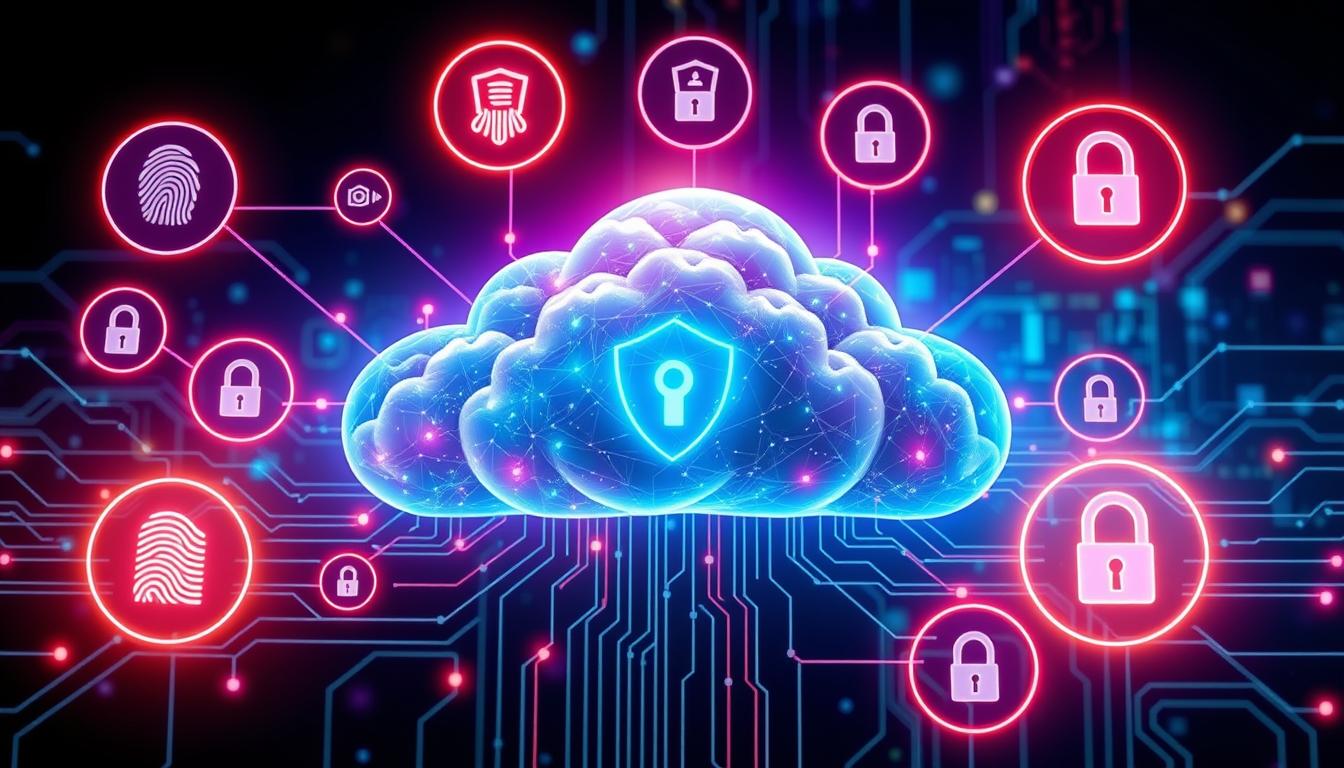
Clouds need strong access management to stay secure. With 90% of data breaches caused by weak passwords, MFA is vital for cloud protection.
Cloud Security Challenges
Cloud computing brings unique security risks:
- Remote access from many devices and places
- Higher risk of unauthorized access
- Complex user authentication in distributed systems
- Keeping sensitive data in cloud services safe
Implementation Strategies
Deploying MFA in the cloud needs careful planning:
- Link with identity and access management (IAM) systems
- Use cloud-native MFA solutions
- Apply adaptive authentication methods
- Follow security regulations
Microsoft says MFA can stop 98% of automated attacks. It’s a must-have for cloud security.
| MFA Strategy | Security Impact |
| Biometric Authentication | 90% increase in security for sensitive applications |
| Hardware Security Keys | Phishing-resistant authentication |
| Time-Based One-Time Passwords | Dynamic, time-limited access credentials |
With solid multi-factor authentication plans, companies can lower the risk of unauthorized access. They can also safeguard their cloud resources from security threats.
Business Benefits of MFA Implementation
Multi-factor authentication (MFA) is key for businesses wanting strong cybersecurity. It goes beyond basic security. It offers big strategic benefits.
Companies using MFA see big security wins and save money. The main benefits are:
- Blocking up to 99.9% of automated cyber attacks
- Reducing data breach risks by 80%
- Decreasing support calls related to password resets by 32%
- Enhancing overall organizational security posture
The cost savings of MFA are huge. With cyber breaches costing about $3.92 million, MFA is a smart risk move.
| Business Impact | MFA Effectiveness |
| Cybersecurity Risk Reduction | Up to 80% decrease in breaches |
| Compliance Requirements | Meets GDPR, HIPAA, PCI DSS standards |
| User Trust | 70% increased user confidence |
“Multi-factor authentication is no longer optional—it’s a fundamental requirement for modern business security.”
MFA also helps with growing business needs. The global MFA market is set to hit $29.4 billion by 2027. It’s a big part of keeping businesses safe.
Companies that use MFA show they care about keeping data safe. They also stay efficient in a digital world that’s getting more complex.
Common MFA Security Threats
Multi-factor authentication (MFA) systems are key in keeping identities safe and managing access. But, they can face off against clever cyber threats. Knowing these risks is key to keeping security strong.
- Social engineering attacks
- Man-in-the-Middle (MITM) attacks
- Credential stuffing
- Push notification fatigue
Social Engineering Attacks
Social engineering is a big threat to keeping identities safe. In 2020, 75% of organizations worldwide faced phishing attacks. These attacks use tricks to get people to share their login details.
The weakest link in security is often human behavior, not technological systems.
Man-in-the-Middle Attacks
MITM attacks are a clever way to get around security. They involve hackers sneaking into conversations between systems. This can let them grab login details. It’s known that 80% of breaches are identity-driven, showing how important it is to protect login info.
Companies need to do more than just use MFA. They should keep an eye on things, teach users, and use smart login checks. These checks look at things like where you’re logging in from and what device you’re using.
Best Practices for MFA Deployment
Setting up multi-factor authentication needs careful planning. It’s important for companies to think about security when managing access. This helps protect important digital assets.
Here are some key steps for deploying multi-factor authentication:
- Do a detailed risk assessment to find weak spots
- Pick the right authentication methods for your needs
- Make sure users know how to use it
- Keep an eye on your systems and check them often
Experts say it’s vital to plan MFA well. User credentials are exploited in 81% of data breaches. So, using multi-factor authentication is key to defense.
Here are some strategies for deploying MFA:
| Strategy | Impact | Recommendation |
| Adaptive Authentication | 99.9% Reduction in Account Takeover | Use authentication based on context |
| Least Privilege Access | 30% Decrease in Credential Compromise | Give users only the access they need |
| Regular System Assessment | Addresses Annual Infrastructure Changes | Do security checks every quarter |
To succeed with multi-factor authentication, take a complete approach. Use advanced methods and stay ahead of security threats. This way, companies can lower their cybersecurity risks a lot.
Future Trends in Multi-Factor Authentication
The world of digital security is changing fast. Passwordless authentication and AI-powered identity verification are leading the way in MFA. Companies are looking for better ways to keep their digital assets safe.
New trends in authentication are moving towards smarter and easier security. By 2027, the biometric authentication market is expected to hit $76.37 billion. This shows a big change in how we verify identities.
Passwordless Authentication Revolution
Passwordless authentication is changing the game. By 2022, 60% of large enterprises plan to use it in over 50% of their cases. It’s replacing old password systems with something more secure.
- Biometric verification
- Hardware security tokens
- Magic link authentication
- Behavioral pattern recognition
AI-Powered Authentication Innovations
Artificial intelligence is making authentication smarter. The AI-powered MFA market is set to reach $4.1 billion by 2024. Machine learning checks user behavior to offer ongoing, risk-based checks.
| Authentication Method | Security Level | Market Projection |
| Biometric Authentication | High | $76.37 billion by 2027 |
| Behavioral Authentication | Medium-High | $4.63 billion by 2027 |
| AI-Powered MFA | Advanced | $4.1 billion by 2024 |
As cyber threats get smarter, passwordless and AI-driven identity checks will be key. Companies need to keep up with these tech advances to stay secure.
MFA Compliance and Regulations
Multi-factor authentication is now key in many rules, pushing companies to improve how they manage access. The Payment Card Industry Data Security Standard (PCI DSS) is a big example. It says companies must use MFA for over six million card transactions a year. They also need MFA for all non-console access to sensitive data.
Many rules now see MFA as a must-have security tool. The National Institute of Standards and Technology (NIST) Cybersecurity Framework says MFA is a key part of good authentication. Healthcare rules like HIPAA also push for MFA to keep electronic health info safe. Financial rules, like the Gramm-Leach-Bliley Act, suggest MFA to protect user data.
State privacy laws are also making MFA more common. The California Consumer Privacy Act (CCPA) and California Privacy Rights Act (CPRA) help protect consumer data. The Federal Trade Commission often requires MFA in deals, showing its role in keeping systems safe.
With cyber threats growing, seeing MFA as just a rule isn’t enough. It’s a key defense for companies. International standards like ISO/IEC 27001 and SOC 2 highlight the need for strong access controls. MFA is a key part of keeping systems and data safe in many fields.